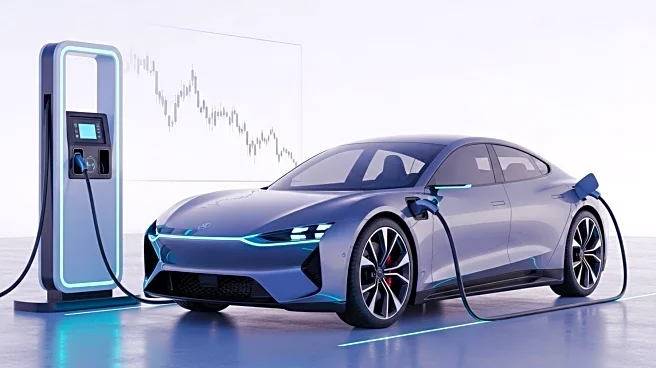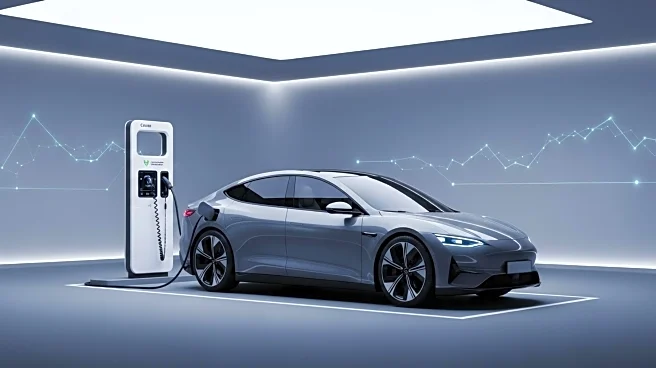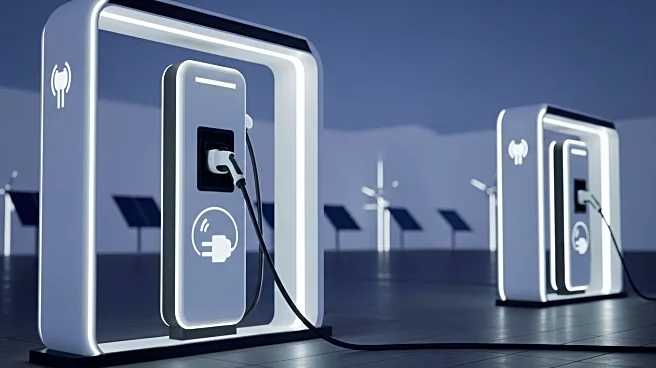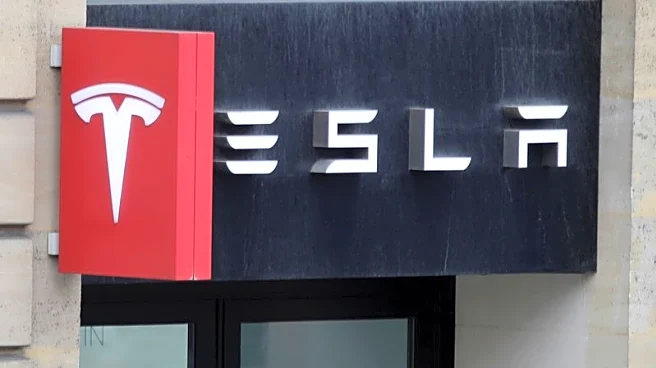What is the story about?
What's Happening?
Tesla Inc. experienced a notable decline in its stock value, closing at $436.00, down 5.11%. This drop occurred despite the company reporting record third-quarter deliveries of approximately 497,099 vehicles, surpassing forecasts. The surge in deliveries was largely driven by customers rushing to take advantage of the $7,500 U.S. electric vehicle tax credit before its expiration at the end of September. Following the expiration, Tesla has increased lease prices across its models, raising concerns among investors about the sustainability of demand without the subsidy support. The trading volume for Tesla reached 135 million shares, about twice its three-month average of 88 million. In contrast, the broader market saw gains, with the S&P 500 and Nasdaq Composite both closing higher, supported by tech and growth stocks.
Why It's Important?
The decline in Tesla's stock highlights investor concerns about the company's ability to maintain its sales momentum without the aid of government subsidies. The expiration of the tax credit could potentially impact Tesla's future sales and profitability, as higher lease prices may deter some customers. This situation underscores the broader challenge for electric vehicle manufacturers in sustaining growth as subsidies phase out. The market's reaction also reflects the sensitivity of Tesla's stock to changes in policy and consumer incentives, which are critical factors in the electric vehicle market. The outcome of Tesla's fourth-quarter delivery guidance and margin trends will be crucial in determining whether the recent sales strength was merely a temporary boost from incentives.
What's Next?
Investors and analysts will be closely monitoring Tesla's upcoming fourth-quarter delivery guidance and margin trends to assess the company's performance without the subsidy boost. The focus will be on whether Tesla can sustain its sales growth and maintain profitability in a more challenging market environment. Additionally, the company's strategic responses, such as potential pricing adjustments or new product offerings, will be key areas of interest. The broader electric vehicle market may also see shifts as other manufacturers adjust their strategies in response to changing subsidy landscapes.
AI Generated Content
Do you find this article useful?














